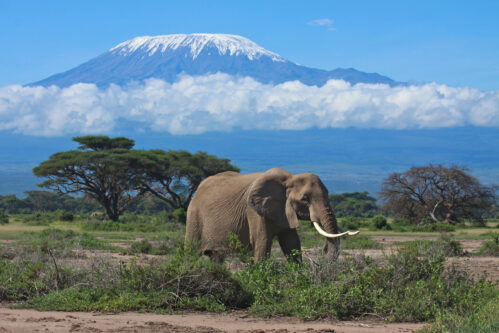
Climbing Kilimanjaro in August is a unique challenge that can provide an amazing sense of accomplishment for those who are willing to take on the challenge. With temperatures ranging from warm during the day to cold at night, and with ever-changing weather conditions, it’s important to be prepared before making any attempt at scaling this iconic mountain. In this blog post, we discuss what it’s like to climb Kilimanjaro in August from weather, climate, environment and temperature perspectives so you can better prepare yourself for your journey.
When it comes to weather, the temperature on Kilimanjaro tends to be warm during the day and cold at night, with an average daily temperature ranging between 15 and 20 degrees Celsius. August is usually a dry month on the mountain but thunderstorms can occur in some areas. In addition, strong winds are common near the summit of Kilimanjaro, making it difficult for climbers to make progress in their ascent.
In terms of climate, temperatures decrease significantly as altitude increases when climbing Kilimanjaro in August. At lower altitudes (up to 3000m), temperatures may reach up to 25 degrees Celsius during the day while nights will be much cooler at around 11 degrees Celsius. As you ascend higher up the mountain, temperatures begin to drop significantly, with average temperatures at 4000m (the Kilimanjaro crater area) ranging from 8 degrees Celsius during the day and 4 degrees Celsius at night.
The environment on Kilimanjaro in August is also quite varied, with different terrain and vegetation to explore. Low-altitude areas are generally made up of dense forests while higher altitudes feature plains and moorlands as well as snow-capped peaks near the summit. As you ascend, you’ll need to adjust your clothing accordingly in order to stay comfortable.
Finally, it’s important to be aware of the temperature range when planning a climb up Kilimanjaro in August. During the day, temperatures can range from 15 to 25 degrees Celsius while at night they can drop as low as 4 degrees Celsius. It’s crucial to be aware of these temperature ranges so that you can plan for the right clothing and gear before embarking on your journey.
Climbing Kilimanjaro in August is not an easy task, but with the right preparation and knowledge, it can be an incredibly rewarding experience. With an understanding of weather, climate, environment, and temperatures, you can better prepare yourself for this unique challenge and enjoy all the amazing views along the way. Good luck!